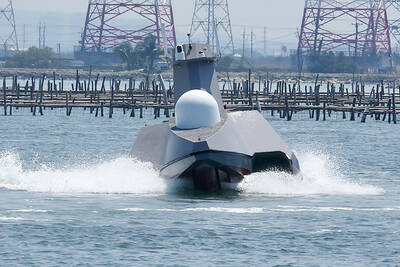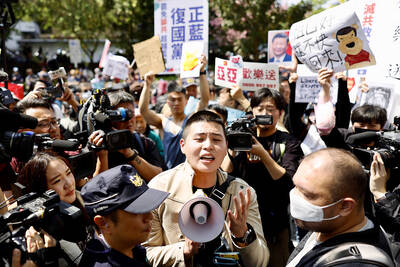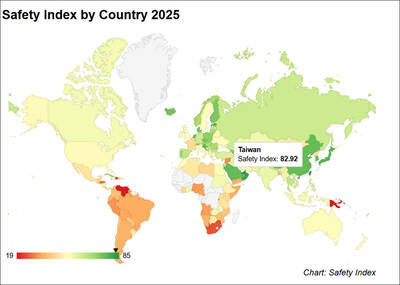Mother-of-pearl, wisteria and a deceptively blue butterfly from South America are part of a strategy to woo high-end fashion designers to discover the potential of Japanese textiles.
A handful of highly specialized manufacturers and artisan weavers from Tango, in the region of Japan's ancient capital Kyoto, were in Paris last week to showcase their innovations, combining centuries-old tradition with the latest in nanotechnology.
Tango has long been famous for textiles because its wet climate favors the production of silk, particularly the crepe called chirimen used in kimonos. But technological advances are spurring the creation of new products with potential appeal outside Japan.
Initially it was the automaker Nissan which took an interest in the Morpho butterfly, which inhabits an area along the River Amazon. Its shiny cobalt blue color in fact contains no blue pigment, but is produced by the way it refracts light.
Nissan and Teijin Fibres initially explored the possibility of mimicking the butterfly's properties for a new kind of paint for cars but instead came up with a glossy material, Morphotex.
Without dyes or pigments, it creates the illusion of color under light from the structure of its fibres. Using nanotechnology to control the thickness of the fibres, the fabric shows variations on red, green, blue and purple.
Toyota Tsusho, the textile arm of another car manufacturer, has also harnessed nanotechnology to develop a technique of weaving gold and silver threads into luxury denim, which it believes could find a future in haute couture.
New techniques are also enabling small-scale craftsmen to innovate and diversify, says Kyoji Tamiya of Tamiya Raden, whose father developed a way of weaving with mother-of-pearl inlays.
Shells are mounted on traditional Japanese paper in exquisite patterns, reminiscent of oriental pottery, which is then shredded to form the weft and woven with silk. From using the fabric, which costs upwards of US$510 a meter, for elaborate obi, the sashes that tie kimonos, he is branching out to handbags.
Mitsuyasu Koishihara's father, meanwhile, has revived an ancient technique for making textiles from the branch of the mountain wisteria. Once made all over Japan, it declined with the arrival of cotton and all but disappeared except in the Tango region.
"One day he saw this ama or Japanese sea woman [traditionally, women dive for shells in Japan] and she had a bag made of something he didn't recognize. She said it was wisteria," Koishihara said.
He set about rediscovering how to weave from it. Wild wisteria, which looks like raffia, is soft to the touch but twice as strong as linen.
Their company, Yushisha, is the only one specializing in wisteria textile making, which has now been designated a "cultural heritage of Kyoto."
As well as being used for obi, bags and noren, Japanese curtains decorating the entrance of shops, they are hoping their rare fabric will find a niche market in the West.
Other innovations shown in Paris included silks retaining the original stiffness with which the silk pupa protects itself from ultra-violet light, which is normally lost in the manufacturing process, and ultra-soft cottons made to a higher gauge than anywhere else in the world.

ENDEAVOR MANTA: The ship is programmed to automatically return to its designated home port and would self-destruct if seized by another party The Endeavor Manta, Taiwan’s first military-specification uncrewed surface vehicle (USV) tailor-made to operate in the Taiwan Strait in a bid to bolster the nation’s asymmetric combat capabilities made its first appearance at Kaohsiung’s Singda Harbor yesterday. Taking inspiration from Ukraine’s navy, which is using USVs to force Russia’s Black Sea fleet to take shelter within its own ports, CSBC Taiwan (台灣國際造船) established a research and development unit on USVs last year, CSBC chairman Huang Cheng-hung (黃正弘) said. With the exception of the satellite guidance system and the outboard motors — which were purchased from foreign companies that were not affiliated with Chinese-funded

PERMIT REVOKED: The influencer at a news conference said the National Immigration Agency was infringing on human rights and persecuting Chinese spouses Chinese influencer “Yaya in Taiwan” (亞亞在台灣) yesterday evening voluntarily left Taiwan, despite saying yesterday morning that she had “no intention” of leaving after her residence permit was revoked over her comments on Taiwan being “unified” with China by military force. The Ministry of the Interior yesterday had said that it could forcibly deport the influencer at midnight, but was considering taking a more flexible approach and beginning procedures this morning. The influencer, whose given name is Liu Zhenya (劉振亞), departed on a 8:45pm flight from Taipei International Airport (Songshan airport) to Fuzhou, China. Liu held a news conference at the airport at 7pm,

Taiwan was ranked the fourth-safest country in the world with a score of 82.9, trailing only Andorra, the United Arab Emirates and Qatar in Numbeo’s Safety Index by Country report. Taiwan’s score improved by 0.1 points compared with last year’s mid-year report, which had Taiwan fourth with a score of 82.8. However, both scores were lower than in last year’s first review, when Taiwan scored 83.3, and are a long way from when Taiwan was named the second-safest country in the world in 2021, scoring 84.8. Taiwan ranked higher than Singapore in ninth with a score of 77.4 and Japan in 10th with

GRIDLOCK: The National Fire Agency’s Special Search and Rescue team is on standby to travel to the countries to help out with the rescue effort A powerful earthquake rocked Myanmar and neighboring Thailand yesterday, killing at least three people in Bangkok and burying dozens when a high-rise building under construction collapsed. Footage shared on social media from Myanmar’s second-largest city showed widespread destruction, raising fears that many were trapped under the rubble or killed. The magnitude 7.7 earthquake, with an epicenter near Mandalay in Myanmar, struck at midday and was followed by a strong magnitude 6.4 aftershock. The extent of death, injury and destruction — especially in Myanmar, which is embroiled in a civil war and where information is tightly controlled at the best of times —